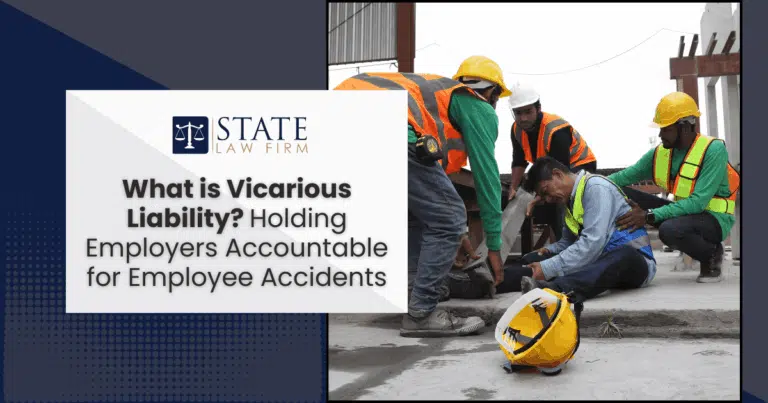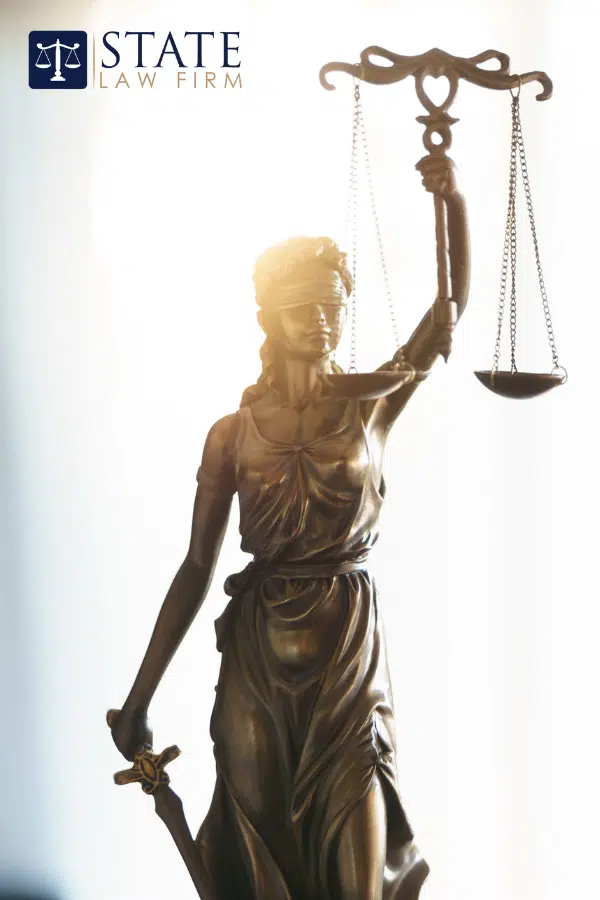When an employee causes an accident on the job, the legal consequences don’t always stop with the person behind the wheel or the desk. In many cases, the employer may also be held liable under the doctrine of vicarious liability, a principle in tort law that assigns responsibility to one party for the actions of another. This concept is critical in many personal injury cases, particularly company vehicles, delivery drivers, or on-the-clock accidents.
In California, where traffic-related incidents remain a significant cause of personal injury claims, the risk for employers is exceptionally high. According to the California Office of Traffic Safety, there were over 4,400 traffic fatalities in California in 2022, many involving commercial and work-related vehicles. When employees are engaged in these incidents while performing job duties, their employers may face severe legal and financial exposure.
At State Law Firm, we help injured parties understand their rights and navigate the complexities of liability when a company may be responsible for an employee’s conduct. As a boutique personal injury law firm based in Sherman Oaks and driven by young attorneys, we’re not afraid to take on challenging cases and push for accountability. Whether you’re seeking guidance after a workplace accident or want to explore your legal options following a crash, our Sherman Oaks car accident lawyers are here to help.
In this guide, we’ll explain how vicarious liability works, when it applies, and what both employees and employers need to know to protect their rights. Let’s get started.
Understanding Vicarious Liability: Definition and Legal Framework
Vicarious liability is a legal doctrine that holds one party liable for the wrongful actions of another. In the context of personal injury law, this typically means that an employer can be held responsible for an employee’s negligent acts if those acts occurred within the scope of employment.
Rooted in tort law, vicarious liability isn’t about proving the employer did anything wrong directly—it’s about recognizing that when employees act on behalf of their employer, their actions can legally be treated as the same. This is especially important in negligence-based claims, where liability may extend beyond the individual who caused the injury.
Pro Tip: If you’ve been injured in an accident involving someone who was “on the clock,” there’s a good chance vicarious liability may come into play. Don’t assume it’s just the employee’s insurance you have to deal with—the employer’s resources may also be at stake.
The Role of Employment Relationship in Vicarious Liability Cases
Not every working relationship creates vicarious liability. For liability to attach, there must be a formal employer-employee relationship, not an independent contractor setup. Courts will examine several factors, including the level of control the employer has over the worker, how the worker is paid, and whether the work performed was part of the employer’s regular business.
Key factors courts look at:
- Scope of employment – Was the employee performing job duties?
- Authorization – Was the act authorized or closely related to authorized tasks?
- Benefit to employer – Did the action benefit the employer, even indirectly?
When these factors align, the employer may be held legally accountable—even if they weren’t present during the incident.
Common Scenarios Where Vicarious Liability Applies
Some of the most frequent applications of vicarious liability occur in everyday workplace situations. These include:
- Auto accidents involving delivery drivers, sales reps, or other employees driving for work
- Slips and falls are caused by janitorial or maintenance staff in commercial settings.
- Negligent actions by employees while providing services to clients
- Construction site accidents involving subcontracted labor under the supervision of a general contractor
These cases often hinge on whether the employee was “acting within the scope of employment” or deviating for personal reasons. For example, a delivery driver who causes an accident during their route may trigger vicarious liability. Still, if that same driver takes a detour for personal errands and causes harm, the employer may not be on the hook.
Pro Tip: Always gather detailed information about the employee’s duties and what they did during the incident. These facts matter—a lot.
The Impact of Vicarious Liability on Employers and Employees
For employers, vicarious liability can lead to significant financial exposure, especially when damages involve serious injuries or long-term medical care. Many carry liability insurance to help cover these risks, but lawsuits can still affect their reputation and operations.
Conversely, employees often wonder if their mistakes could cost them personally. Fortunately, if the act was within the scope of employment, the employer’s insurance typically handles the liability. That said, intentional misconduct or gross negligence may remove the safety net.
Impacts to consider:
- Increased insurance premiums for employers
- Workplace morale concerns if employees feel overly scrutinized
- Legal exposure for employees in rare exceptions (e.g., intentional torts)
- Pressure to implement clearer safety policies and procedures
Defenses Against Vicarious Liability Claims: What Employers Should Know
Employers have a few defenses they can raise to avoid vicarious liability. Common arguments include:
- Independent contractor defense: The worker was not an employee but an independent contractor.
- Frolic and detour: The employee acted outside their duties (e.g., personal errands).
- Intentional misconduct: The action was so far removed from the job that liability should not attach.
- Negligent hiring or supervision: Sometimes, blame is shifted to a different legal theory instead of vicarious liability.
Understanding these defenses can shape the legal strategy, especially if you’re seeking compensation from a company that may claim the accident wasn’t related to their business operations.
The Importance of Workplace Policies to Mitigate Risks Associated with Vicarious Liability
The best way to reduce liability is to prevent negligent conduct in the first place. Employers who invest in training, policies, and proactive oversight protect their teams and strengthen their legal standing if something goes wrong.
Effective risk-mitigation strategies include:
- Clear job descriptions outlining acceptable employee conduct
- Safety training tailored to the specific industry
- Regular reviews of employee performance and incident reports
- Clear documentation practices and supervision protocols
- Compliance with state and federal employment regulations
These practices reduce the likelihood of accidents and serve as evidence of due diligence should a claim arise.
At State Law Firm, we know that the nuances of vicarious liability can make or break a personal injury case. Whether someone on the job has injured you or you’re navigating liability questions after an accident, our team is here to help you find clarity—and a path to justice.
Let’s talk about what happened and explore your options. Your case may be stronger than you think.


